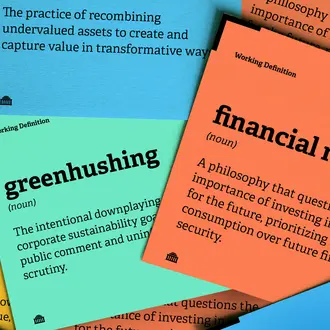Credit: Rob Dobi
It was 2014. Taylor Swift had recently released her single “Shake It Off.” She was now a certifiable pop star and Tauhid Zaman, associate professor of operations at MIT Sloan, wondered if he could get her to follow him on Twitter. Swift had about 60 million followers; he had fewer than 1,000. She represented a global empire; he was an academic. A long shot, yes, but these odds were precisely what motivated the question.
“I wanted to know what makes people follow you back,” Zaman said. “Celebrities have a wall around them, but their weaknesses on social media are the people they follow.”
Could he somehow use a celebrity’s friends on Twitter — Swift’s hair stylist or sound engineer — to open the gates to her inner circle? He dubbed this the “follow-back problem,” and he solved it with his students at MIT.
The first step of this process was to understand the underlying dynamics of follows on Twitter. For instance, what kinds of Twitter interactions matter the most when trying to get followers? And do overlapping social networks actually help build connections? If they do, then to what degree do they help?
Zaman tested these questions using a group of Twitter bots posing as artists. Each bot was designed to promote a real artist’s work through Twitter’s three main interactions: following, retweeting, and replying. By tracking these interactions and the responses, Zaman was able to methodically probe and quantify the behavior of users on Twitter.
Two basic principles emerged: first, intuitively, those who don’t follow many other people are unlikely to follow you back, while those who follow a lot of people are likely to follow you if you follow and retweet them. Second, social overlap matters. If Swift follows somebody who, in turn, follows Zaman, then Zaman has a greater chance that Swift will follow him. This boost follows a predictable pattern where the friend of my friend is my friend.
But simply understanding these relationships wasn’t Zaman’s goal.
“We’re engineers, and so we wanted to design a system around this insight,” he said.
By the time he and his team got to work on this, though, “Shake it Off” had become much less interesting than the world’s most famous Twitter user, President Donald Trump. What, he wondered, would be the most promising path to get a follow from @realDonaldTrump?
Zaman ran a model to find the optimal sequence of interactions to garner a follow from Trump, assuming you could only interact with 10 or 20 of his connections. (As the number of interactions gets larger, Zaman said, a Twitter account becomes increasingly suspect, looking more like a bot than a real person.)
He found that targeting the right people in the right order made a follow from the president four to five times likelier than a random approach; and if the follow-back campaign expanded to include friends of friends, then the likelihood jumped even higher.
In the end, by targeting a network of 200 individuals on Twitter associated with Trump and the people he follows, Zaman found that he could increase the chance that the president would follow him back by an order of magnitude compared to an uncoordinated campaign. The chance was still small, about 2 percent in his calculations, but it still showed the impact of following people in a smart way.
What does this have to do with democracy and counterterrorism?
As frivolous as this result may seem, Zaman’s work is both timely and relevant to core questions of democracy and counterterrorism, and more generally information warfare. Consider the involvement of Russian bots on Twitter and Facebook now understood as a concerted effort to sway results of the 2016 election.
Or consider the social media accounts created by organizations like the Islamic State group, which has very effectively expanded membership through these channels. Given this social media landscape, cracking the follow-back problem is the first, essential step for infiltrating an adversary’s network.
By targeting certain Twitter accounts, for instance, Zaman believes it may be possible to spread information that dampens the effect of foreign actors in domestic elections, or that counters the recruitment propaganda spread by IS.
This prospect, he admits, is equal parts exciting and scary. While there is plenty of good that can come out of these tools — getting people to exercise, eat their vegetables, stop joining IS — there is an obvious dark side.
“In my opinion, this can be far more dangerous than conventional weapons which have a fixed blast radius,” Zaman said.
While social media tools don’t present direct physical threats, they can powerfully influence the opinions of a whole country; they can, in Zaman’s analogy, have a tremendous blast radius.
“These are weapons, and I’m building efficient ways to use the weapons, so this has to be handled with care,” he said.
Zaman hasn’t yet used the modeling results from this work to pursue a Twitter follow from Swift and Trump, but he is considering giving it a try. And as for the follow-back problem, he is planning on incorporating it into a full-fledged social network counter-measure for influence campaigns by hostile state and non-state actors.
Or, as he puts it, he is “developing the tools for the next generation of information warfare.”
This is the first in a three-part series examining new work about Twitter, influence, and bots by MIT Sloan associate professor Tauhid Zaman. Read 'A new method for rooting out social media bots' and 'How do online bots shift opinions?'.



